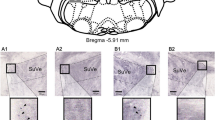Abstract
Very-low-frequency (VLF) atmospherics or sferics are pulse-shaped alternating electric and magnetic fields which originate from atmospheric discharges (lightning). The objective of the study was threefold: (i) to analyse numerous parameters characterizing the sferics activity with regard to their suitability for field studies, (ii) to identify meteorological processes related to the sferics activity and (iii) to investigate the possible association of sferics with pain processes in patients suffering from migraine- and tension-type headaches. Over a period of 6 months (July through December) the sferics activity in the area of Giessen (Germany) was recorded. Three sferics parameters were chosen. The number of sferics impulses per day, the variability of the impulse rate during a day and the variability in comparison to the preceding day were correlated with weather processes (thunderstorm, temperature, vapour pressure, barometric pressure, humidity, wind velocity, warm sector). Significant correlations were obtained during the summer months (July, August) but not during the autumn months (October, November, December). During autumn, however, the sferics activity was correlated with the occurrence of migraine-type headaches (r=0.33, P<0.01) recorded by 37 women who had filled out a headache diary over a period of 6 months (July–December). While the thunderstorm activity was very intense during July and August, no relationship between sferics and migraine was found. In summer, tension-type headaches were associated with meteorological parameters such as temperature (r=0.42, P<0.01) and vapour pressure (r=0.28, P<0.05). Although the sferics activity can explain a small percentage of the variation in migraine occurrence, a direct influence was more likely exerted by visible or otherwise perceptible weather conditions (thunderstorms, humidity, vapour pressure, warm sector, etc.) than by the sferics activity itself.
Similar content being viewed by others
Author information
Authors and Affiliations
Additional information
Received: 9 January 2001 / Revised: 1 May 2001 / Accepted: 9 May 2001
Rights and permissions
About this article
Cite this article
Vaitl, D., Propson, N., Stark, R. et al. Natural very-low-frequency sferics and headache. Int J Biometeorol 45, 115–123 (2001). https://doi.org/10.1007/s004840100097
Issue Date:
DOI: https://doi.org/10.1007/s004840100097




